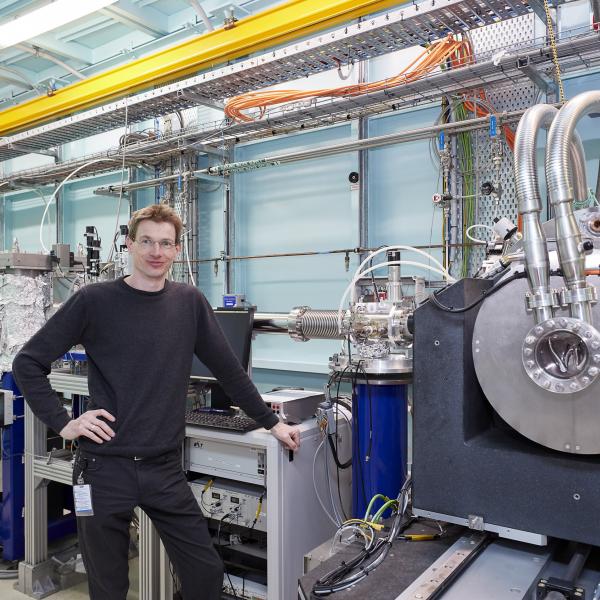
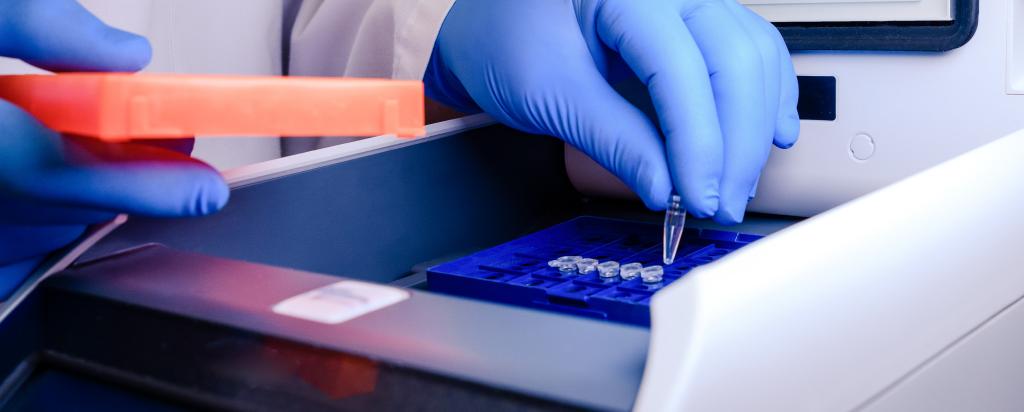
Published on the 28th July 2021 by ANSTO Staff
Key Points
-
University of Melbourne researchers have investigated a method to produce magnetic nanoparticles in Australia for use in COVID-19 PCR tests
-
Australia lacks a local supplier for the magnetic nanoparticles which are used in the PCR test to extract viral RNA from cells
-
The investigators used the X-ray absorption spectroscopy beamline at ANSTO's Australian Synchrotron to find the best form of magnetic iron oxide
ANSTO’s Australian Synchrotron continues to prove its usefulness in COVID-related research with the latest investigation linked to magnetic material used in standard PCR tests.
A combination of events brought University of Melbourne researchers to the X-ray absorption spectroscopy beamline last year when the Australian Government was investigating local supply chains for COVID test components.
“It turns out one of the things they put in COVD test kits is magnetic nanoparticles coated with silica (glass) and no one makes them in Australia,” explained Dr Nicholas Kirkwood of the Mulvaney chemistry research group at the University of Melbourne.
Silica-coated magnetic nanoparticles are used because they attract RNA from a solution containing cells from the nose or throat. Virus RNA binds to the particles.
“By putting tiny magnets inside the silica, you can simplify the process to purify the RNA. Using a magnet to collect the nucleic acids is quicker and you don’t need expensive equipment,” said Kirkwood.
The University of Melbourne group evaluated the best methods to produce magnetic particles for this purpose.
After the team observed that some of the nanoparticles changed colour following synthesis, they speculated that two forms of magnetic iron oxide were formed during synthesis: magnetite (Fe3O4) and maghemite (γ-Fe2O3).
Crucially, magnetite is more magnetic than maghemite.
“It is not easy to distinguish the two phases as they are very, very similar crystallographically, but X-ray absorption spectroscopy can readily distinguish between these two crystal structures.
“In collaboration with the XAS beamline scientists, we were able to mail in samples for measurements. From the results, we determined that an ingredient - basically a salt that we were adding to the mixture - is driving the formation of one crystal structure and not the other. That is quite novel scientifically in this system,” said Kirkwood.

(Left to right) Exciton Science researchers Dr. Nick Kirkwood, Dr. Siobhan Bradley, Trent Ralph, Jiho Han and Dingchen Wen were at the Synchrotron in March 2021 to conduct XAS experiments on the magnetic silica particles
They found that the optimal salt concentration produced a greater proportion of the superior magnetite.
The researchers are planning to publish the results as it is relevant to approaches to nanoparticle synthesis.
Senior Scientist Dr Bernt Johannessen said it was relatively straightforward to apply the synchrotron technique to distinguish between the two types of iron oxide.
X-rays are absorbed by core electrons in elements present in a sample and can be used to reveal the local atomic structure, irrespective of whether the material is crystalline, amorphous, or, in this case, nanocrystalline.
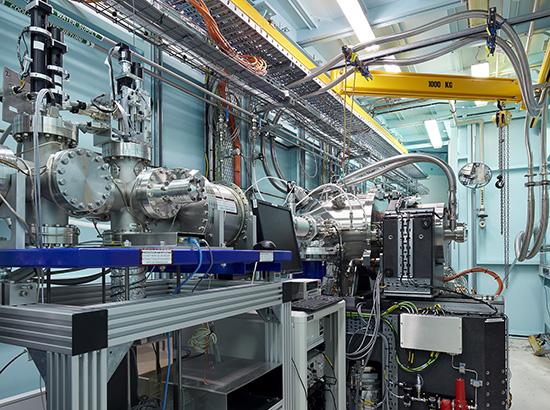
The X-ray absorption spectroscopy beamline at ANSTO's Australian Synchrotron
“Whilst these measurements are really the bread-and-butter of what we do here at the XAS beamline, what was more challenging for us was sourcing good standards for the materials,” said Johannessen.
Commercially available forms of magnetite and maghemite do not have the level of purity needed for scientific experiments.
“Without a good standard, you can’t do a good experiment,” said Johannessen.
In searching for a suitable source of maghemite, the team learned that it was used in tape cassettes in the 1970s and ordered some music cassettes on eBay to extract the maghemite. This was used as a backup as it gives a similar signal to the maghemite standard.
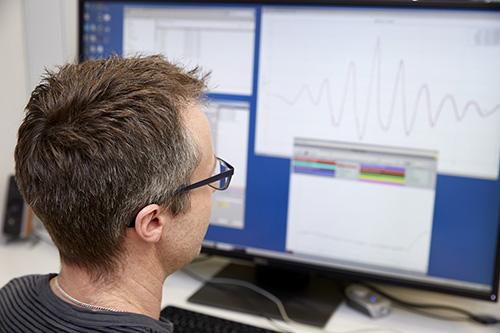
Bernt Johannessen reviews data from the X-ray absorption beamline
Magnetite standards were donated by Crystal World, and Marion Anderson, a lecturer in the School of Earth, Atmosphere and Environment at Monash University.
The experiments were given priority status at the Synchrotron because they were related to COVID-19 and the entire beamline team, including Dr Valerie Mitchell and Dr Jessica Hamilton, helped facilitate the spectroscopy measurements.
The University of Melbourne team is working with a test kit supply company in Sydney, who are testing the materials.
They have also located a company in Melbourne, Scaled Organics, who are assessing if it is a viable product.
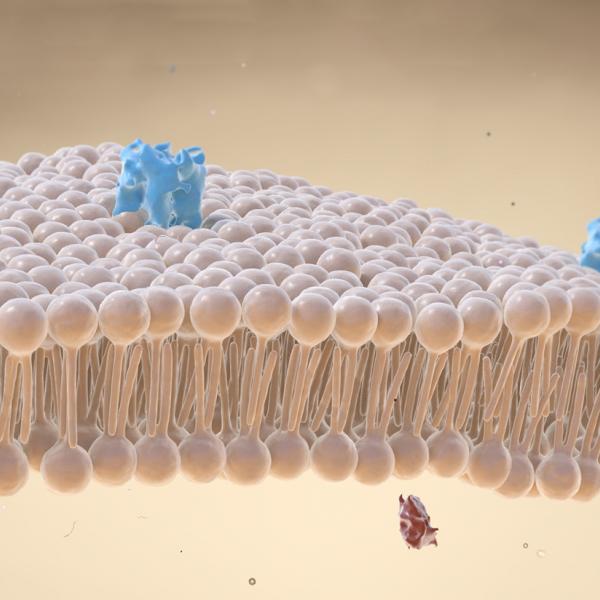
ANSTO supports new area of COVID research
High-quality deuterated lipids from the National Deuteration Facility needed for study
Read more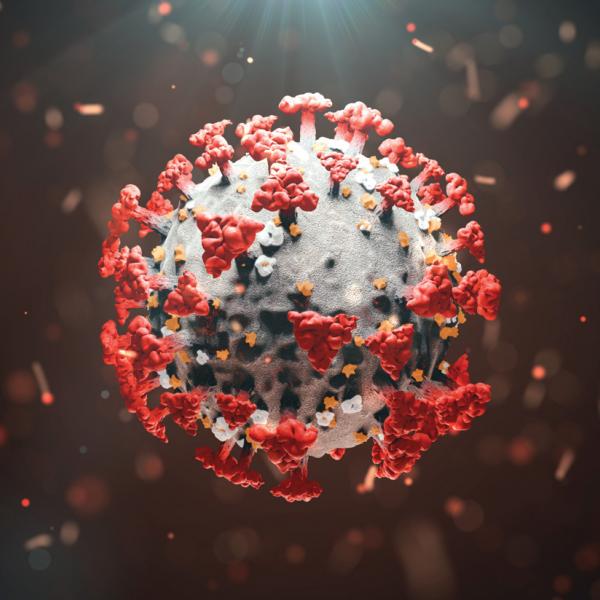
More progress understanding how COVID invades
International team characterises an important protein interaction
Read more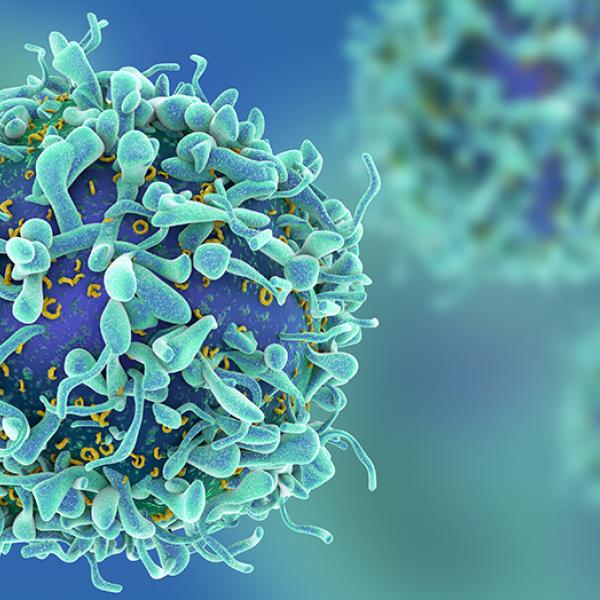
Clarifying the immune response mechanism in COVID
Synchrotron technique provides insights into docking mechanism that activates immune response
Read more



